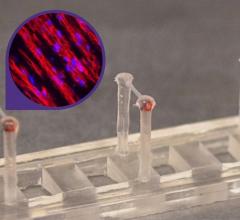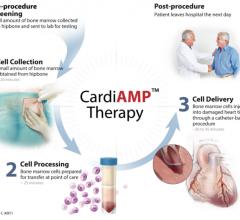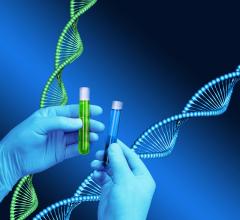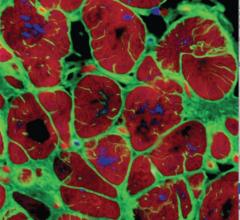June 8, 2008 - A new study about how shear stress improves adult stem cell attachment to vascular surfaces moves researchers closer to the development of a unique tissue-engineered stem cell vascular bypass graft, reported a study presented during the Vascular Annual Meeting, June 5-8, in San Diego, CA.
At Thomas Jefferson University in Philadelphia, a team of researchers lead by vascular surgeon Paul J. DiMuzio, M.D., is developing a novel vascular bypass graft using adult stem cells derived from a patient's adipose tissue. According to Dr. DiMuzio, "The advantage of using these stem cells is that they are easy to obtain in abundance from patients in which they are intended for use; however, it has been difficult to attach the stem cells to the surface of natural vascular tissue grafts."
Work performed by Eric S. Hager, M.D., directly addressed the problem of stem cell attachment. "After we change (differentiate) the stem cells into those resembling the lining of blood vessels (endothelial cells), we seed them onto the grafts and slowly introduce shear stress to improve their attachment," said Dr. Hager. "The current study investigates exactly how shear stress alters the way the stem cells adhere to vascular surfaces."
At the 62nd Annual Meeting of the Society for Vascular Surgery, Dr. Hager and colleagues from Jefferson reported their work examining the presence and function of molecules important for cell attachment (called integrins) on the surface of the stem cells. The stem cells express these important molecules, but at lower levels than found on the endothelial cells they are attempting to emulate, possibly explaining the initial difficulties in attachment. Others have observed that endothelial cells increase integrin expression when stimulated by shear force, enabling these cells to remain attached to the inside of blood vessels.
In designing the current study, Dr. Hager hypothesized that "Shear stress improves stem cell attachment to vascular basement membrane components via upregulation of integrin expression, similar to endothelial cells." According to Dr. DiMuzio, "Firm attachment of the stem cells to the vascular graft would allow for the formation of a confluent monolayer of cells in the hopes of improving graft function."
During the study, the researchers exposed human adipose-derive stem cells (ASC) differentiated towards endothelial-like cells to physiological levels of shear stress. Subsequently, integrins expression was measured along with cell attachment to culture plates pre-coated with various vascular basement membrane components (collagen I, fibronectin, gelatin).
They observed that the human ASC expressed integrins, but at reduced levels compared to endothelial controls. Application of shear stress significantly upregulated _5_1 integrin expression, but not that of _v _3 . Demonstrating that this translates to a functional change, shear stress significantly improved ASC attachment to pre-coated plates, particularly those with collagen I and fibronectin, but not uncoated control. Finally, blockade of the _5_1 integrin receptor significantly eliminated attachment. According to Dr. Hager, "these data suggest that shear stress may be useful to improve the retention of stem cells to tissue engineered vascular grafts. Future experiments will evaluate how well the stem cell grafts function as a bypass for occluded arteries."
Grants awarded to Dr. DiMuzio from the National Institutes of Health, American Vascular Association and the American Heart Association funded this research.
For more information: www.VascularWeb.org


 November 19, 2021
November 19, 2021 









